- Mar 25, 2012
- 11
Hi everybody.
This is my first post on this wonderful forum.
I'm French speaking, from Quebec, Canada. Sorry for any error in my futures posts.
To make it quick, my spouse is a nurse in a small 1400 habitants remote village in Northern Quebec. We are in the middle of the wood, 10 hours of car from the biggest city... This is a community of native people, like many others in Canada. This community has a sport complex with a pool. This pool is from 2006. I came here last July and the pool was closed. It was open the next week and closed again for maintenance, reopened in fall and it is closed since Christmas, water is still.
I am myself an industrial maintenance technician, with more than 14 years of experience with many, many kind of system. (I am not a pool tech, but I learn fast!) I first noticed the sauna not working, showers not functioning well, ventilation stopped, etc. I offered my help to those "maintenance guys", who have a very hard time understanding those "new systems", since they have very limited resources and skills.
So we fixed the sauna and the dehumidification system, witch was down for about a year!
This breakdown has resulted in surface corrosion of many parts in the mechanical room, due to the high condensation rate of the summer months and chlorine environnement. I found pumps seized (mostly heating circulators), filters not backwashed for a while because of by-passed PLC, pump casing corroded and cavitated, impeller paper thin, pump motor with exploded bearings, chlorine feeder clogged, leaking valves, ORP in alarm, scale on piping and material, etc.
This is obviously a case of neglected material and lack of knowledge.
So they took me, since I'm in the village 2 months at a time, 1 month holidays in south, 2 month here, and so on, to help them restart the pool. Here I am, ordering expensive parts to replace and trying to plan the next move.
The shower room is nearly restored, 5 shower on 16 where working, cold water due to a faulty circulation pump (replaced) and clogged shower head. Just this detail is bad for a pool. Sanitation of a pool begin in the showers I think. The less the bathers introduce in the pool, the better we are. So I ordered foam hair/body soap dispensers to welcome the users for using the showers.
I am in the process of replacing the motor, pump, impeller, I rebuilted every valves on the system for the backwash (we use city water for BW), replaced corroded thermo-wells, many gauges, cleaning the chlore feeder (witch was run with granular chlorine instead of briquettes!), replaced circulations pumps for heating, etc. The parts take longer to come here and I'm still waiting for the pump.
I think the water was out of balance very often and equipment was not cared for. The people of the first nation here has not the same view on material than us, therefore they don't take all the care we usually take for such installations.
The people here are different than in the city and they also don't have the same assiduity to work and this is causing the maintenance of the pool to be neglected a bit. They have some training, but forget it quickly.
What I would like to ask here is your experience in starting a pool. I am not a pool tech and never had to start a pool before, especially a big like this... As I said, I learn fast and I like this kind of system.
I would like to have your advice about the steps to follow.
I was looking for another way to sanitize the pool than chlorine, but I'm not sure anymore. The goal is to reduce the maintenance at a minimum, to reduce the chemicals dependency and keeping a sparkling water without too much work, because we cannot change these people. I looked a Ionization, UV, Ozone, etc. but they all have theirs drawback and you need chlorine anyway. I will stick to normal chemistry and try to teach them the easiest way to maintain their pool on the long run.
My plans in the next weeks: Brushing the walls, vacuuming the bottom, soaking the sand with a detergent, backwashing, filling the system and checking for leaks, correct the water level, starting the pump and circulate the water for a day. I plan to shock right away the same morning I start the pump.
I will then check the water balance and try to correct any bad parameter.
I will check the acid and chlorine controller for proper reading vs the Palintest that we have, and see how it react.
I will have to re-balance the bottom and skimmers ratio, since we closed the valves.
Is 70-30 is okay?
I will keep you in touch of my progress if you want.
Thanks for reading me an and have a great day!
Some pictures
[attachment=0:2884supr]fil.jpg[/attachment:2884supr]
[attachment=1:2884supr]FL127909.JPG[/attachment:2884supr]
[attachment=2:2884supr]FL127904.JPG[/attachment:2884supr]
This is my first post on this wonderful forum.
I'm French speaking, from Quebec, Canada. Sorry for any error in my futures posts.
To make it quick, my spouse is a nurse in a small 1400 habitants remote village in Northern Quebec. We are in the middle of the wood, 10 hours of car from the biggest city... This is a community of native people, like many others in Canada. This community has a sport complex with a pool. This pool is from 2006. I came here last July and the pool was closed. It was open the next week and closed again for maintenance, reopened in fall and it is closed since Christmas, water is still.
I am myself an industrial maintenance technician, with more than 14 years of experience with many, many kind of system. (I am not a pool tech, but I learn fast!) I first noticed the sauna not working, showers not functioning well, ventilation stopped, etc. I offered my help to those "maintenance guys", who have a very hard time understanding those "new systems", since they have very limited resources and skills.
So we fixed the sauna and the dehumidification system, witch was down for about a year!
This breakdown has resulted in surface corrosion of many parts in the mechanical room, due to the high condensation rate of the summer months and chlorine environnement. I found pumps seized (mostly heating circulators), filters not backwashed for a while because of by-passed PLC, pump casing corroded and cavitated, impeller paper thin, pump motor with exploded bearings, chlorine feeder clogged, leaking valves, ORP in alarm, scale on piping and material, etc.
This is obviously a case of neglected material and lack of knowledge.
So they took me, since I'm in the village 2 months at a time, 1 month holidays in south, 2 month here, and so on, to help them restart the pool. Here I am, ordering expensive parts to replace and trying to plan the next move.
The shower room is nearly restored, 5 shower on 16 where working, cold water due to a faulty circulation pump (replaced) and clogged shower head. Just this detail is bad for a pool. Sanitation of a pool begin in the showers I think. The less the bathers introduce in the pool, the better we are. So I ordered foam hair/body soap dispensers to welcome the users for using the showers.
I am in the process of replacing the motor, pump, impeller, I rebuilted every valves on the system for the backwash (we use city water for BW), replaced corroded thermo-wells, many gauges, cleaning the chlore feeder (witch was run with granular chlorine instead of briquettes!), replaced circulations pumps for heating, etc. The parts take longer to come here and I'm still waiting for the pump.
I think the water was out of balance very often and equipment was not cared for. The people of the first nation here has not the same view on material than us, therefore they don't take all the care we usually take for such installations.
The people here are different than in the city and they also don't have the same assiduity to work and this is causing the maintenance of the pool to be neglected a bit. They have some training, but forget it quickly.
What I would like to ask here is your experience in starting a pool. I am not a pool tech and never had to start a pool before, especially a big like this... As I said, I learn fast and I like this kind of system.
I would like to have your advice about the steps to follow.
I was looking for another way to sanitize the pool than chlorine, but I'm not sure anymore. The goal is to reduce the maintenance at a minimum, to reduce the chemicals dependency and keeping a sparkling water without too much work, because we cannot change these people. I looked a Ionization, UV, Ozone, etc. but they all have theirs drawback and you need chlorine anyway. I will stick to normal chemistry and try to teach them the easiest way to maintain their pool on the long run.
My plans in the next weeks: Brushing the walls, vacuuming the bottom, soaking the sand with a detergent, backwashing, filling the system and checking for leaks, correct the water level, starting the pump and circulate the water for a day. I plan to shock right away the same morning I start the pump.
I will then check the water balance and try to correct any bad parameter.
I will check the acid and chlorine controller for proper reading vs the Palintest that we have, and see how it react.
I will have to re-balance the bottom and skimmers ratio, since we closed the valves.
Is 70-30 is okay?
I will keep you in touch of my progress if you want.
Thanks for reading me an and have a great day!
Some pictures
[attachment=0:2884supr]fil.jpg[/attachment:2884supr]
[attachment=1:2884supr]FL127909.JPG[/attachment:2884supr]
[attachment=2:2884supr]FL127904.JPG[/attachment:2884supr]


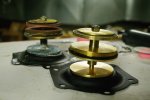
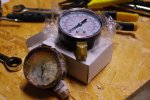
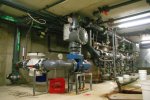
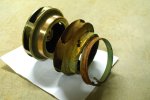
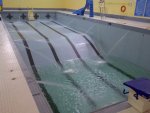
 ...
...